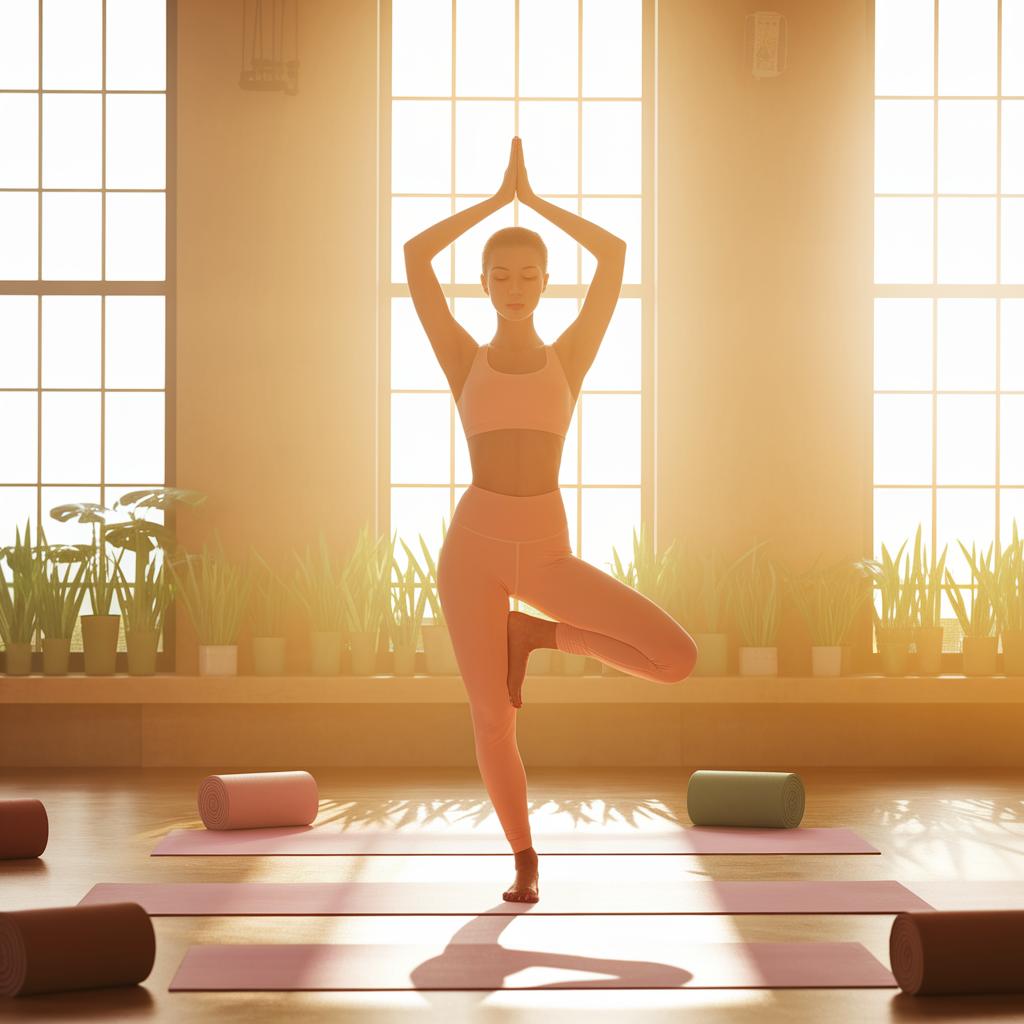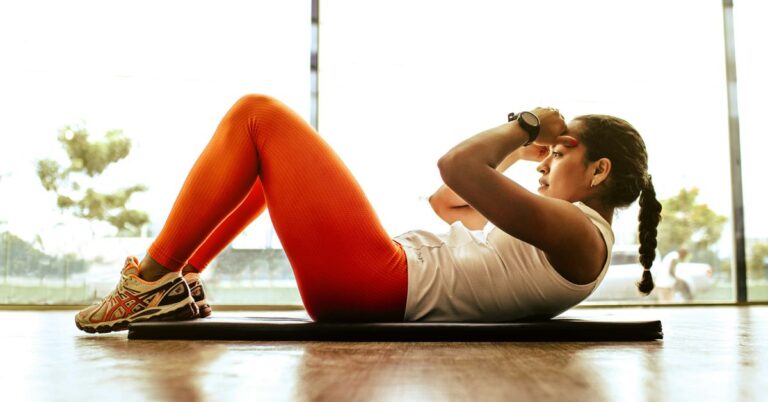Incorporating Yoga into Your Fitness Routine for Balance
In today’s fast-paced world, where balancing work, family, and personal health can seem like juggling flaming torches, many of us are on a quest for equilibrium. Yes, we all want to stay fit, but let’s be honest: the gym can sometimes feel like a second job. Between the clanking weights and the intense cardio sessions, it’s easy to forget about that other essential component of fitness—balance. And no, I’m not just talking about the ability to stand on one leg without toppling over like a toddler who’s had too much sugar.
Enter yoga: a practice that has been around for thousands of years, yet remains a powerful tool for modern fitness enthusiasts. Not just a mere trend, yoga offers a plethora of benefits that go beyond flexibility and relaxation. It’s like the secret sauce in your fitness routine—a subtle yet transformative ingredient that can enhance strength, improve mental clarity, and yes, restore that much-needed balance. So, how can you successfully incorporate yoga into your fitness routine? Buckle up, because we’re about to journey through the harmonious world of yoga.
The Science of Balance
Before we dive headfirst into the various yoga techniques, let’s take a moment to understand what balance really means in the fitness context. Balance isn’t just about stability; it’s about the ability to maintain control of your body’s movement, whether you’re running a marathon or simply trying to avoid tripping over the family dog (which, trust me, I’ve done more times than I’d like to admit). According to studies, incorporating balance exercises into your fitness routine can reduce the risk of injury, improve athletic performance, and enhance overall physical function.
Research indicates that a significant number of injuries in sports and daily activities stem from a lack of balance and proprioception—the awareness of your body in space. This is where yoga shines. With its emphasis on mindful movement and body awareness, yoga can serve as a fantastic addition to any fitness regimen aimed at improving balance.
Why Yoga?
So, why should you consider yoga over other forms of exercise? Well, let’s break down the benefits:
- Flexibility: As someone who once tried to touch their toes and ended up doing an impressive impersonation of a pretzel, I can attest to the fact that yoga significantly increases flexibility. This isn’t just about being able to do the splits; it’s about improved range of motion in everyday activities.
- Strength: Many people think yoga is just about stretching, but hold on! Certain styles, like Vinyasa or Ashtanga, can build considerable strength. Ever tried holding a plank in yoga? It’s no walk in the park.
- Mindfulness: Yoga encourages a mind-body connection, promoting mental clarity and reducing stress. In a world filled with distractions (hello, smartphone!), mindfulness is a game-changer.
- Improved Posture: The postures in yoga can correct imbalances in the body, leading to better posture. This is great news for anyone who spends hours hunched over a computer.
Now, let’s be real. I’ve had my fair share of “yoga fails,” whether it was wobbling during a tree pose or forgetting to breathe. But hey, it’s all part of the journey, right? The important thing is to find what resonates with you and your fitness goals.
Types of Yoga to Consider
Not all yoga is created equal. There are various styles, each offering unique benefits and challenges. Here are a few popular types that can enhance your fitness routine:
Hatha Yoga
Hatha yoga is often considered the cornerstone of most yoga styles. It emphasizes basic postures and breath control, making it an excellent starting point for beginners. If you’re looking to develop a solid foundation, Hatha may be your best bet. Plus, you can practice this style almost anywhere—at home, in a park, or even in your living room while avoiding that pile of laundry.
Vinyasa Yoga
Vinyasa is all about flow. This style links breath with movement, creating a dynamic sequence of poses. It’s like a dance, and let me tell you, there’s nothing quite like flowing through poses to feel a sense of rhythm and grace—unless, of course, you trip and face-plant. This style is great for those who enjoy a more active practice.
Ashtanga Yoga
If you’re looking for a challenge, Ashtanga is the way to go. This rigorous style follows a set sequence of poses, emphasizing strength and stamina. I remember my first Ashtanga class—it was like running a marathon while trying to balance on a tightrope. But hey, if you’re up for the challenge, it can be incredibly rewarding.
Restorative Yoga
After all that intensity, restorative yoga is a gentle, calming practice that focuses on relaxation. It involves long-held poses supported by props, allowing the body to release tension. Think of it as the yoga equivalent of a warm hug after a long day—comforting and rejuvenating.
Creating Your Yoga Schedule
So, how do you actually incorporate yoga into your routine? First things first, it’s all about finding a schedule that works for you. Here are some tips:
- Start Small: If yoga is new to you, begin with two sessions a week. Gradually increase the frequency as you become more comfortable.
- Mix it Up: Don’t be afraid to experiment with different styles. This not only keeps things interesting but also allows you to discover what you enjoy most.
- Set the Scene: Create a peaceful environment for your practice—dim lighting, calming music, and maybe even a scented candle (just be careful with the flames!).
- Stay Consistent: Consistency is key. Try to practice at the same time each day or week to develop a habit.
Oh, and if you miss a session? Don’t sweat it! Life happens. Just roll out your mat when you can and keep moving forward.
Integrating Yoga with Other Fitness Activities
You might be wondering, how does yoga fit in with your existing fitness routine? Let’s break it down:
Before Cardio or Weight Training
Using yoga as a warm-up can be incredibly beneficial. Gentle stretches and poses can increase blood flow to your muscles, preparing your body for the workout ahead. Trust me, a few sun salutations before a run can make a world of difference. Just don’t do too many—nobody wants to be that person who shows up to the gym looking like they just completed a yoga marathon.
On Rest Days
Yoga can be a fantastic low-impact alternative on rest days. Instead of plopping on the couch (although, let’s be real, sometimes that’s necessary), spend some time on the mat to keep your body moving and engaged. It’s a perfect way to recover while still doing something productive.
As a Cool Down
After an intense workout, your muscles are crying out for relief. Incorporating a few calming yoga poses can help stretch out the tightness and promote relaxation. Child’s pose, anyone?
Yoga in Action: Personal Stories
Now, let’s take a moment to hear from some fitness enthusiasts who have successfully integrated yoga into their routines. I recently spoke with Sarah, a personal trainer who found yoga to be a game-changer for her clients.
“I always thought yoga was just stretching,” she said, chuckling. “But when I started incorporating it into my training sessions, I noticed significant improvements in my clients’ performance. They were stronger, more flexible, and surprisingly, less stressed!”
Another inspiring story comes from Mike, an avid runner who struggled with tight muscles and frequent injuries. “I was skeptical at first,” he admitted, “but adding yoga to my routine not only improved my flexibility but also made me more aware of my body’s movements. It’s like finding a secret weapon in my running arsenal.”
These stories illustrate a common theme: yoga can enhance not only physical performance but also mental clarity and awareness. And let’s be honest, who doesn’t want to feel a bit more zen in their busy lives?
Overcoming Common Challenges
Of course, no journey is without its hurdles. Here are some potential challenges you might face when incorporating yoga into your fitness routine, along with tips to overcome them:
Time Constraints
We’re all busy, and sometimes, finding time for yoga can seem impossible. Try fitting in shorter sessions—10 or 15 minutes can be enough to make a difference. Plus, there are plenty of online resources that offer quick yoga flows. I’ve found that even a brief session can help reset my mind.
Intimidation Factor
Walking into a yoga studio for the first time can be intimidating. You might feel out of your depth, especially if you’re surrounded by seasoned yogis. Remember, everyone was a beginner at some point. Allow yourself to be a novice—and maybe even have a laugh at your own expense. (I still can’t get over the time I accidentally let out a loud grunt during downward dog!)
Physical Limitations
If you have physical limitations or injuries, consult a healthcare professional before starting yoga. Many modifications can be made to suit your needs, ensuring you get the benefits without risking injury. Yoga should be a tool for healing, not a reason to push your body beyond its limits.
Finding the Right Resources
In today’s digital age, there are countless resources available to help guide your yoga journey. Here are a few suggestions:
- Online Classes: Websites and apps like YogaGlo and Down Dog offer a variety of classes for all levels. You can find anything from a quick stretch to a full hour-long flow.
- YouTube Channels: There are tons of free yoga channels on YouTube, such as Yoga With Adriene, which offers approachable classes for every level. Plus, her dog, Benji, is an adorable bonus!
- Local Studios: If you prefer in-person instruction, check out local studios. Many offer introductory classes or packages for newbies. It’s a great way to meet fellow yogis and build a community.
In my own experience, I’ve found that attending classes not only helps with form but also provides the motivation to keep returning. There’s something about being in a room full of people breathing and stretching together that feels oddly uplifting.
Incorporating Mindfulness into Your Routine
As we round out this exploration of yoga, let’s not forget the mindfulness aspect that comes hand-in-hand with the practice. Mindfulness can be integrated into any fitness routine, whether you’re doing yoga, running, or lifting weights. Here are some tips:
- Focus on Your Breath: Pay attention to your breathing during workouts. This simple practice can enhance your performance and keep you grounded.
- Set Intentions: Before each workout, take a moment to set an intention. This could be something as simple as “I will be present” or “I will push myself today.”
- Practice Gratitude: After each session, reflect on what you’re grateful for—your health, your body’s capabilities, or even just the time you’ve dedicated to yourself.
By incorporating mindfulness into your routine, you’ll find that fitness becomes less of a chore and more of a cherished practice.
The Journey Continues
Incorporating yoga into your fitness routine for balance isn’t just about adding another workout; it’s a holistic approach to well-being. It’s about finding harmony between your body, mind, and spirit while discovering the power of movement in a way that feels authentic to you. Whether you’re a seasoned athlete or just starting your fitness journey, yoga can offer invaluable tools for achieving balance.
So, as you roll out your mat and breathe deeply, remember that the journey is just as important as the destination. Embrace the wobbles, the laughs, and the occasional face-plant. And who knows? You might just discover a new passion that transforms not only your fitness routine but your entire approach to life.
As I wrap this up, I can’t help but think about the countless possibilities yoga presents. Whether it’s finding that elusive balance in your fitness or simply taking a moment to breathe amidst life’s chaos, yoga reminds us that balance is not just a physical state but a state of mind. So go on, give it a try! Your body (and mind) will thank you.









